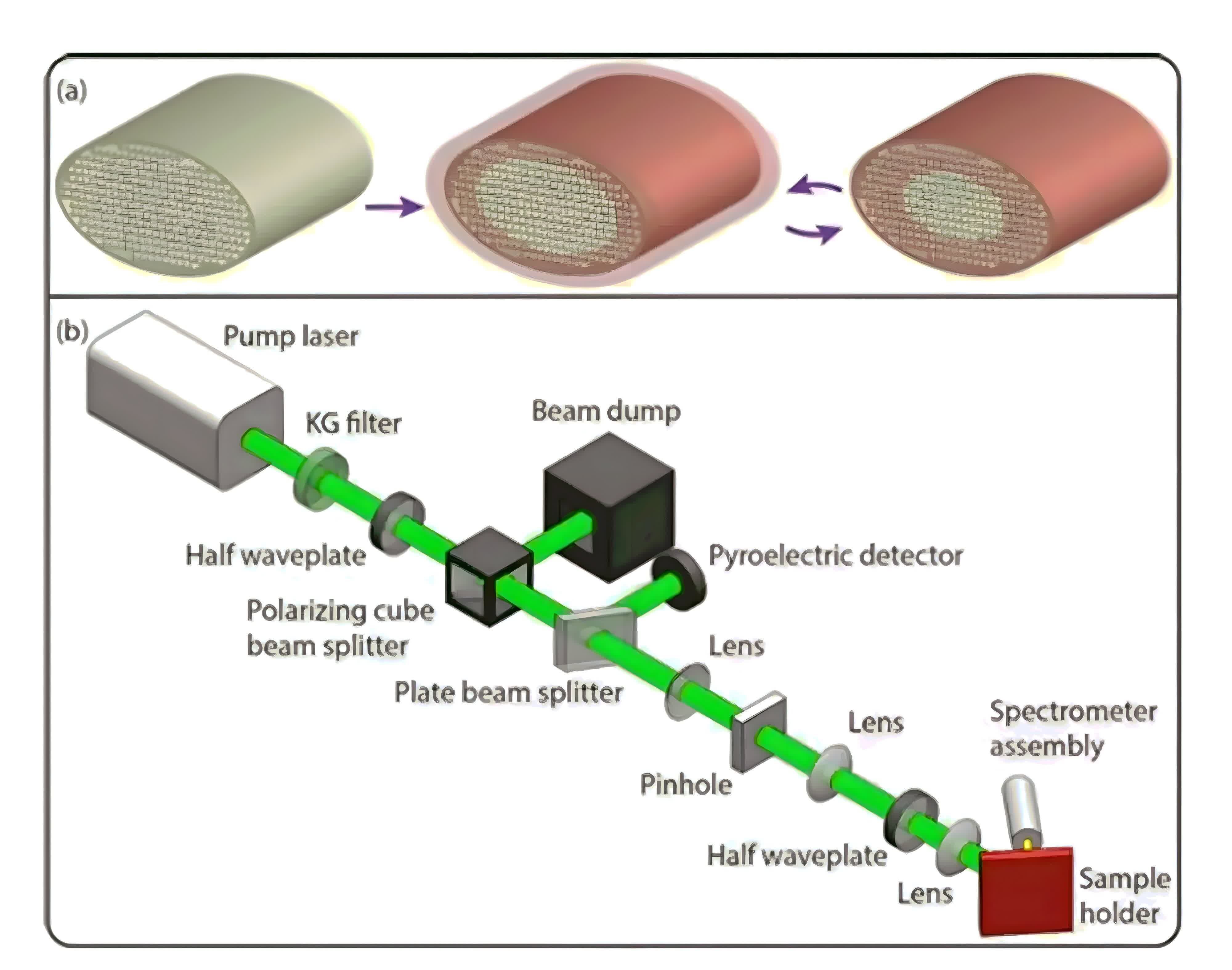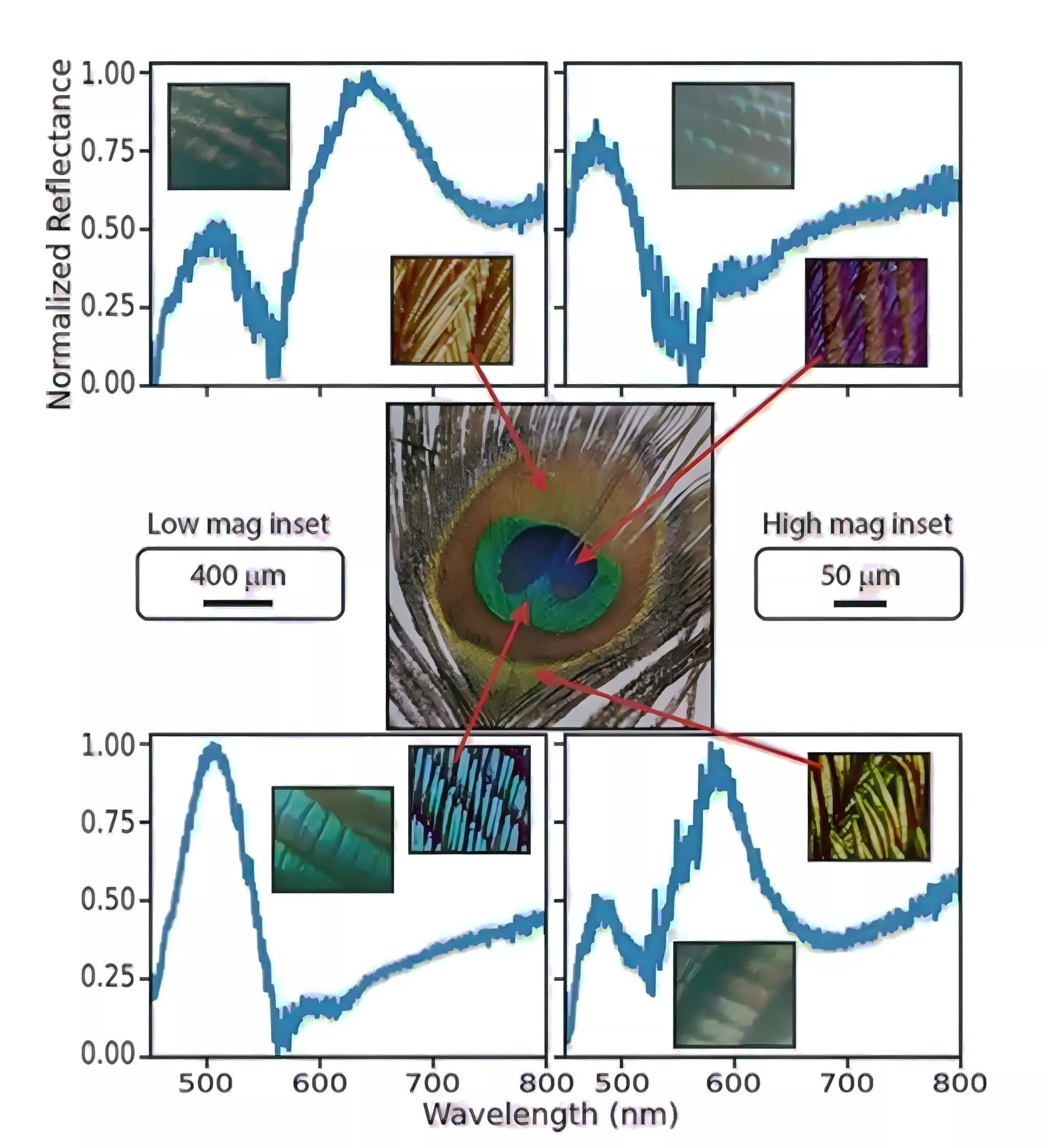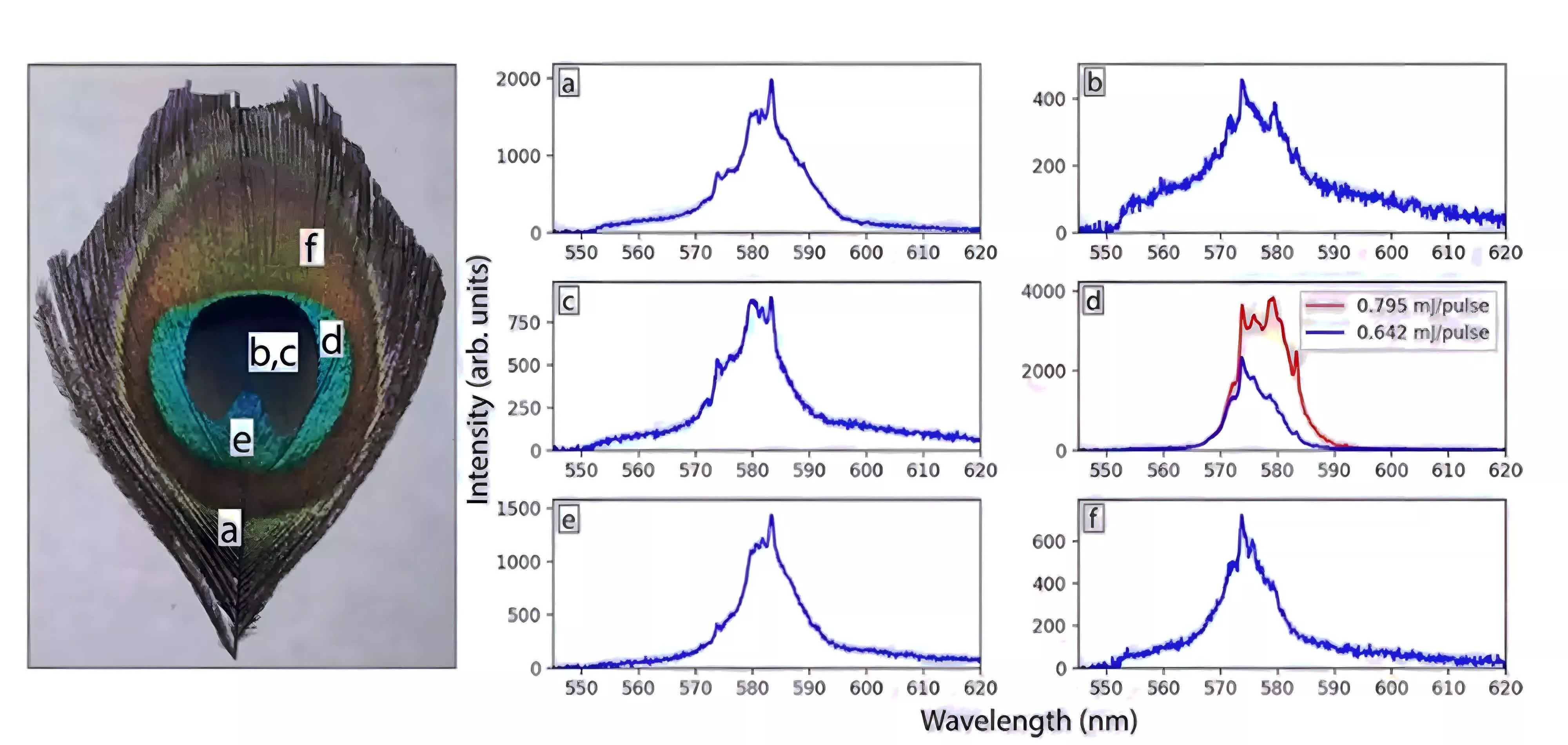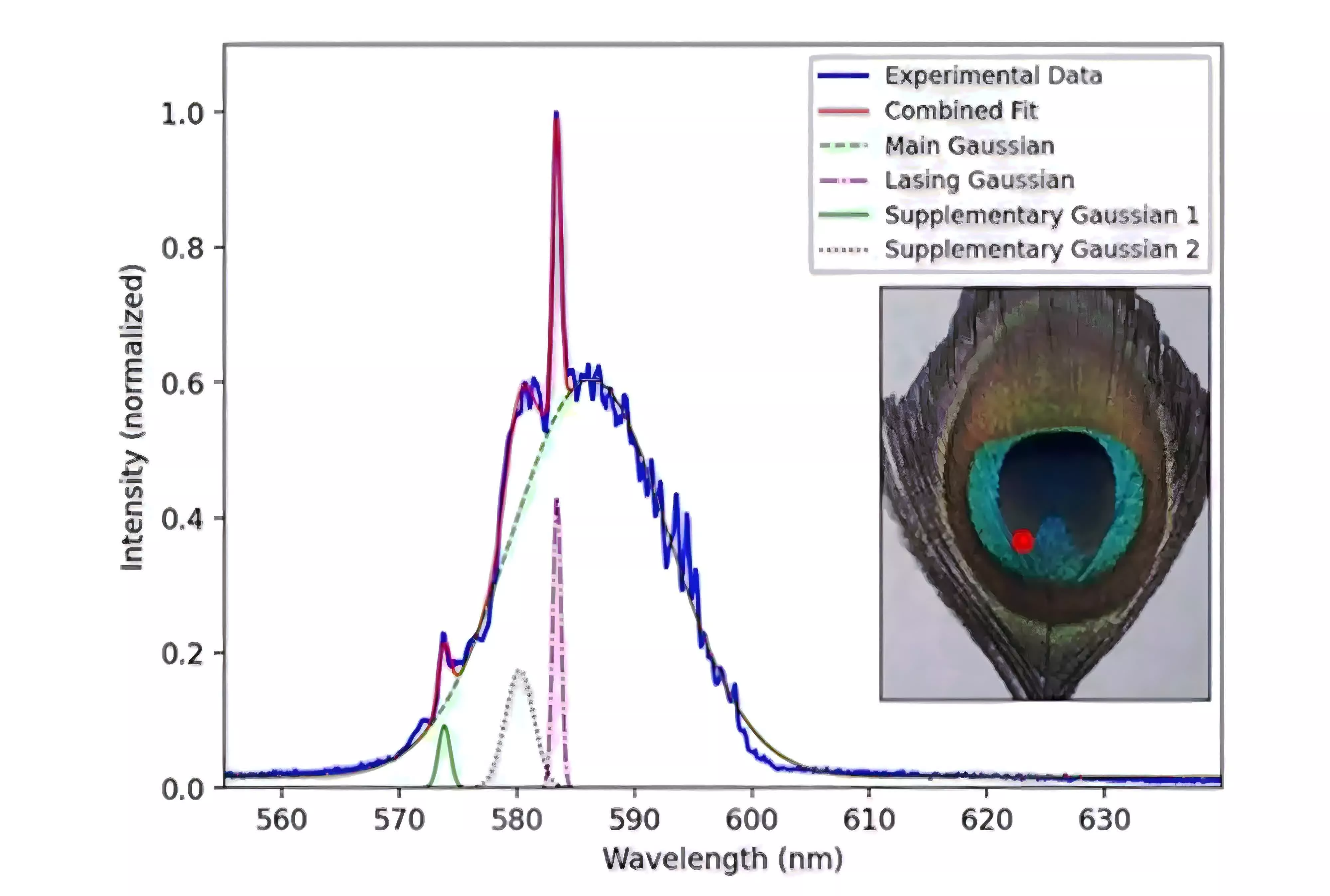TL;DR: Scientists have long been fascinated by the vibrant colors and intricate structures found in the feathers of birds like the Indian Peafowl (commonly known as the peacock). A new study has shed light on a surprising property of these iconic tail feathers: their ability to act as tiny laser resonators when infused with a common fluorescent dye.
The research, conducted by researchers from several US universities and published in Nature, set out to explore the behavior of peacock feather barbules – microscopic structures that help create the bird's famous shimmering eyespots – when treated with the laser dye rhodamine 6G. The aim was to determine if light emitted from these dyed feathers would reveal insights about the underlying biological structure, and whether the colorful photonic crystals in the feathers themselves might serve as feedback mechanisms to produce laser light.
To conduct the experiment, scientists obtained natural peacock feathers, carefully cut them to isolate the eyespot area, and repeatedly wetted and dried specific regions with a solution containing rhodamine 6G. This dye is well-known for its bright fluorescence when exposed to green laser light. Using pulses from a green laser, the team illuminated the prepared feathers and collected the emitted light through a specialized spectrometer system.
Initial results showed that simply staining the feathers once was not enough – laser emission only appeared after several cycles of wetting and drying. This suggested that both the dye and solvent must deeply penetrate the barbules and possibly alter the microstructure for the effect to manifest.
When the laser was aimed at different parts of the eyespot, whether they appeared blue, green, yellow, or brown, the researchers found sharp, consistent laser emission peaks, especially at wavelengths of 574nm and 583nm. These lines stood out against the broader fluorescence of the dye and appeared in all feather samples and color regions tested, indicating a repeatable and stable effect.
The researchers analyzed the emission spectra and found that the observed laser behavior didn't match expectations for so-called random lasers, which usually arise from irregular, highly scattering environments and generate less predictable, variable emission lines. Instead, the peacock feathers produced consistent modes at specific wavelengths, regardless of the local color or structure, prompting the team to conclude that the laser feedback mechanism was not the same as that responsible for the feathers' iridescent colors.
Advanced analysis of the spectral lines suggested that the feedback most likely comes from regular mesoscale structures, which persist throughout the eyespot, within the feather barbules, not from long-range photonic crystal ordering or randomly dispersed scattering paths. The study ruled out alternative explanations such as whispering gallery mode lasers, which would require precise circular cavities not naturally found in peacock feathers.
The lasing effect also required relatively high pump intensities close to, or just above, those found in random laser experiments, but the stable and repeatable nature of the emission points to an underlying order in the biological microstructure. The results collectively show that natural polycrystalline or heterogeneous materials, once infused with the right molecules and subjected to appropriate treatment, can reveal hidden regularities through laser emission.
Although practical applications remain speculative, the findings suggest a new way to probe the internal organization of complex biological materials by measuring their laser emission spectra after dye infusion. Using this technique, it may one day become possible to map or characterize "hidden" structural motifs, or cavities, within feathers and other tissues, opening up opportunities for research in materials science, biophotonics, and bio-inspired laser technologies. For example, Nathan Dawson of Florida Polytechnic University told Ars Technica that the research could help create safe, biocompatible lasers for internal use in the human body in sensing, imaging, and therapy.




